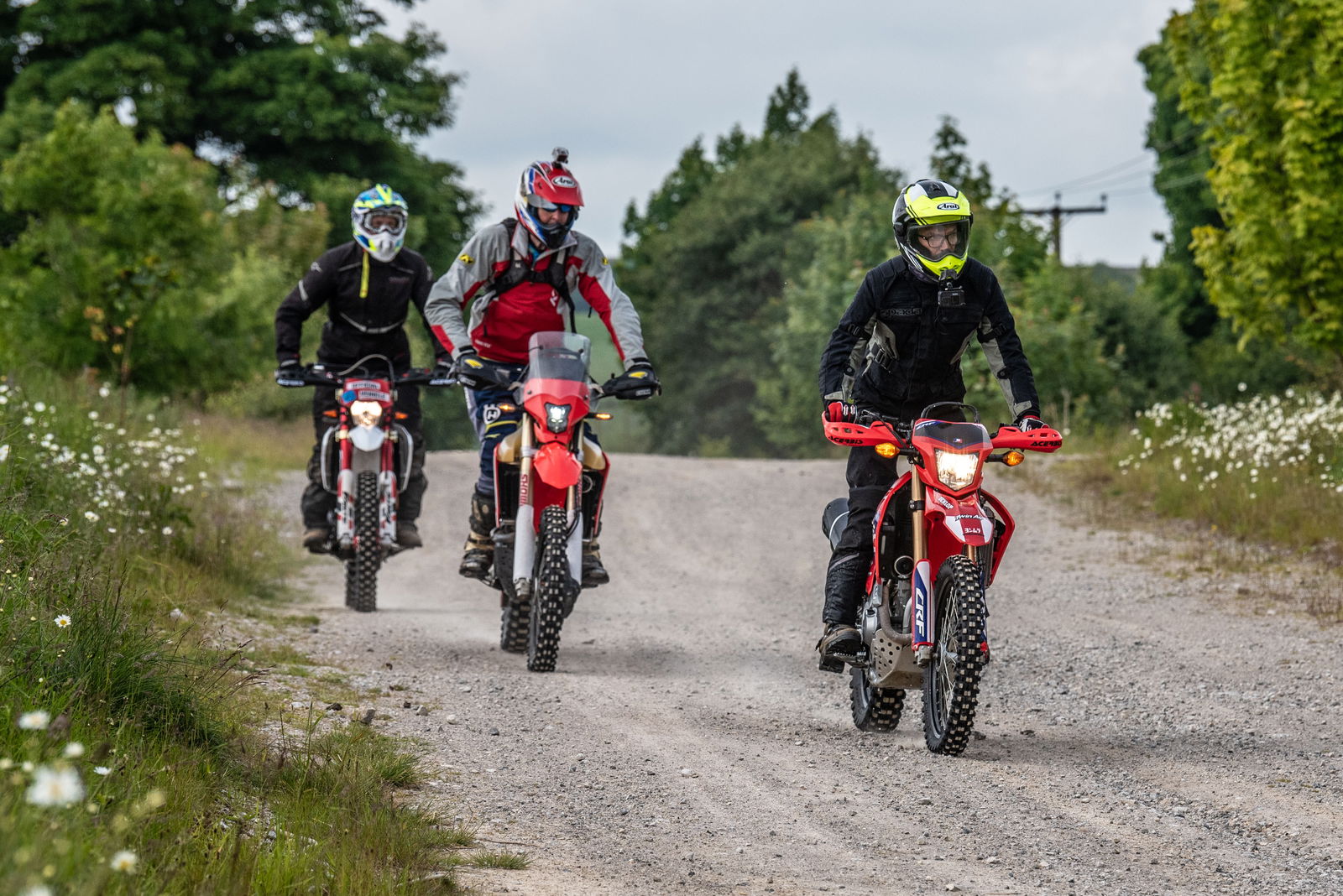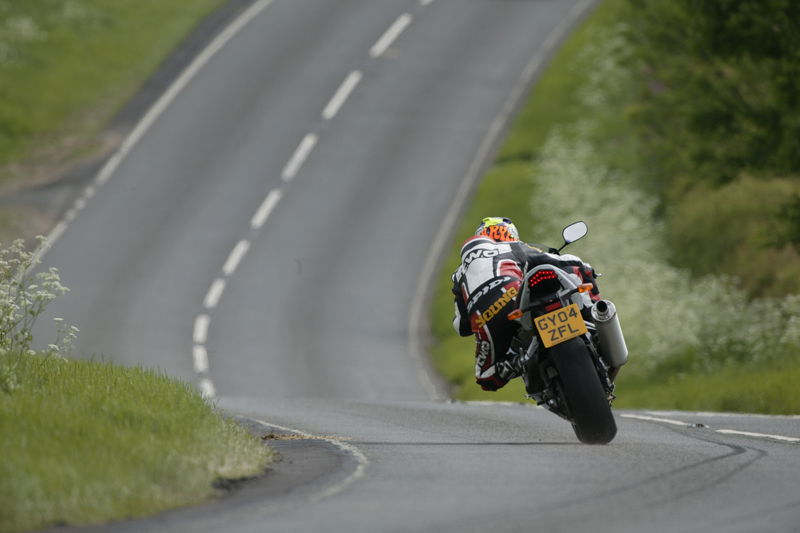Mirror, signal, manoeuvre: How to overtake on a motorcycle
Overtaking other vehicles on a bike is just one of the many positives of riding a motorcycle. Here’s how to nail an overtake

OVERTAKING other vehicles out on the road, when done correctly, is one of the many and varied ways that us bikers save time and ease congestion on the UK’s roads. Done incorrectly through and overtaking could become dangerous and, on occasion, an illegal act. Here’s how to prevent the latter!
When should you never overtake on a motorcycle:
- When road signage or solid white lines prevent it
- On the approach to a junction
- On the approach to a bend
- When a hidden dip is approaching
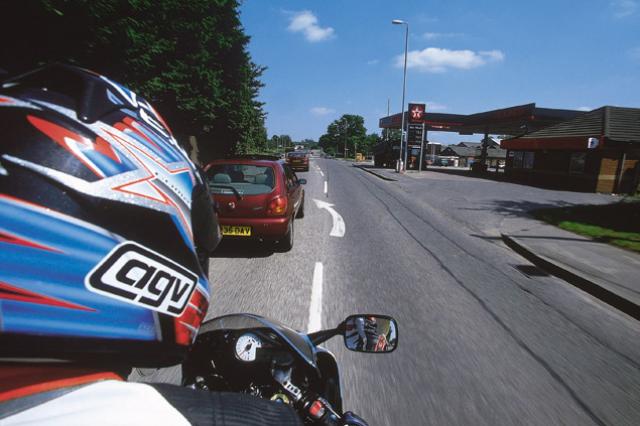
How to plan for an overtake
When lining up an overtake you should be considering the vehicle you plan to get past, it’s speed, the road ahead – for as far as you can see – and any oncoming traffic. Keep an eye on the car's speed and try and judge if you think there is a chance they could be planning to turn into an oncoming junction or slow down drastically.
Next, you should be looking ahead up the road to judge if there are any obstacles that could prevent you from being able to slip around them safely. This includes pedestrian islands/crossings, hatched areas of the road around filter lanes, and any oncoming traffic.
Once you’re confident that the car isn’t going to turn off and that the road ahead is straight, offers you enough visibility and has no obstructions, move out so that you are in a position that allows you to see past the car on the righthand side of the vehicle. You don’t want to be sat on the white line but with your outside indicator, wing mirror and handlebar should be in line with the driver's wing mirror.
Now you’re in a position to see what’s ahead – and be seen by the driver in their rear-view mirror – carry out the same checklist of observations again. If you’re travelling at 50mph you’ll travel 220 metres in 10 seconds, a lot can change in that time.
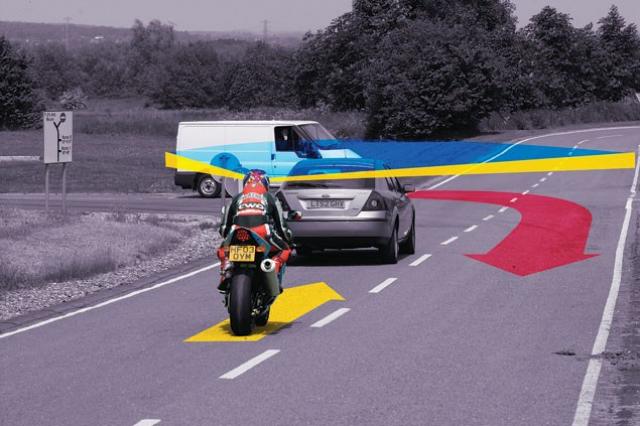
How to nail the overtake
The time you spend on the wrong side of the road is potentially the most dangerous part of the process. Because of that, it’s advisable to spend as little amount of time on there as possible. To get this part right you need to prepare the bike for the overtake. Knock the machine down one or even two gears, until the revs are up in the chunky part of the torque and power curve but without sitting inches from the redline. The idea is to get passed the vehicle in one gear if possible, you need to leave enough meat on the rev counter to get that done.
Now it’s time to move out of the safety of the car in front. It’s not about pinning the throttle and swerving around the other road user, doing that means you’ve committed to the manoeuvre. Double-check there is not somebody coming around you by making a shoulder and mirror check, flicking on your indicator when you are certain it’s safe to start the overtake. Next, move out from behind the car and place yourself on the right-hand side of the centre line of the road. You should have a safe gap between you and the vehicle you’re overtaking of about 1.5 to 2 feet. Now you are in the best position to say whether this overtake is 100% safe to do. Once you are confident of this it’s time to get on the gas and get around them.
I know to read all of this takes a few minutes, but these decisions will be made in seconds. The whole act of sizing up the vehicle, checking the road ahead, preparing the bike and moving out should all happen in 10-15 seconds.
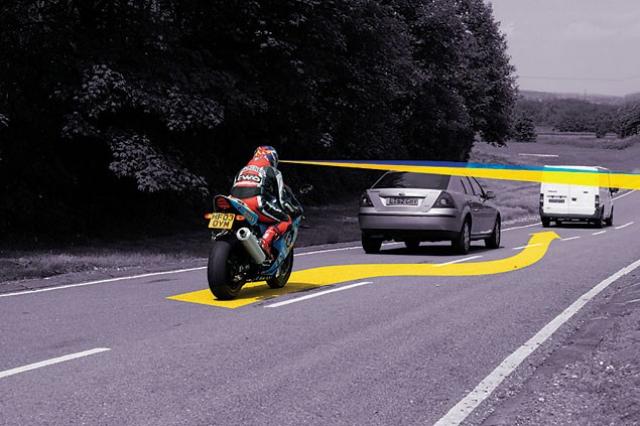
Puling in safely
Once you’re in front of the vehicle you needed to overtake it’s time to get back on the correct side of the road. To do this you need to be rolling off the throttle as you get passed the front end of the overtaken vehicle. Don’t just begin pulling in then, move over to the left slightly but only rejoin the correct side of the road when you can see most of the vehicle’s front end in your left-hand rear-view mirror.
The idea is to slip passed the other road user without them even knowing you’re there. Them having to slam on the anchors because you’ve cut them up by pulling in too early isn’t cool, it just gives us bikers a bad name!
Get into a routine
Routines are a good way to ensure safe and efficient overtakes, particularly for a learner or less experienced riders. For overtakes it’s the OSM / PSL, or Observation > Signal > Manoeuvre > Position > Speed > Look routine.
This routine can be used for many situations, including overtaking and is flexible depending on the circumstances. The OSM / PSL routine will need to be repeated if it is interrupted. For example, if you intend on overtaking, are halfway through the routine and something interrupts you and prevents you from continuing, start the routine again from the beginning.
Observation – Firstly check your mirrors and then look around, ensure you perform a shoulder check in the direction you intend on moving out to so to cover any blind spots that are not observable in your mirrors
Signal – Signaling your intentions informs drivers behind what you are doing, the vehicle that you’re overtaking and drivers that may be coming towards you
Manoeuvre – This is the PSL part where you will make a change in direction and/or speed
Position – You’ll now need to position yourself close to the vehicle you intend on overtaking, but not so close that it obstructs your view ahead
Speed – The longer you take overtaking, the greater the danger. Ensure your motorcycle has enough power to overtake quickly

Most common overtaking mistakes:
- Not remaining calm - If you can’t overtake here, there is always another chance!
- Don’t start too far back
- Not getting in the correct gear
- Sitting on the car in front’s bumper
- Pulling in too quickly
For more advice on how to filter more safely, click here.
